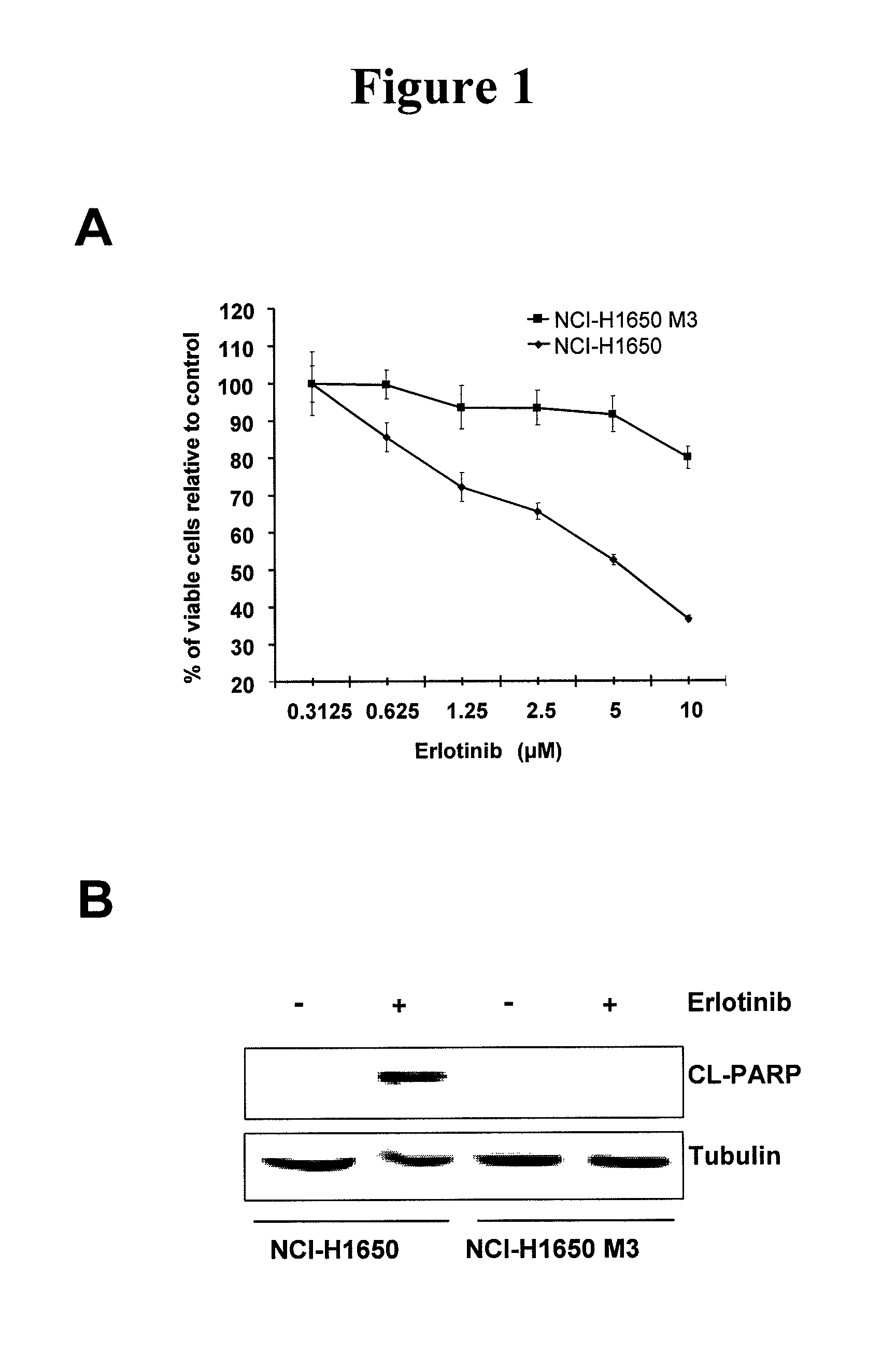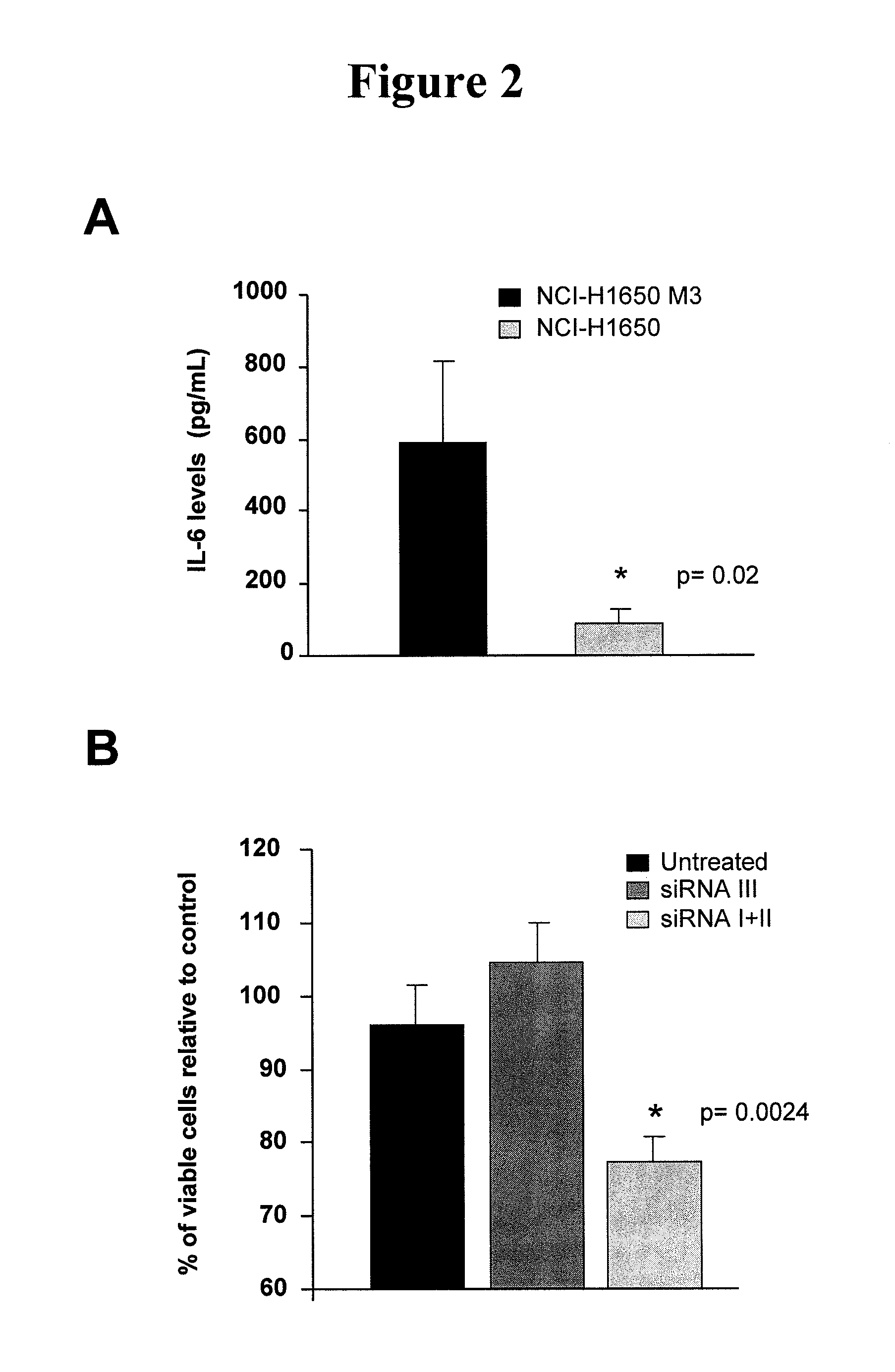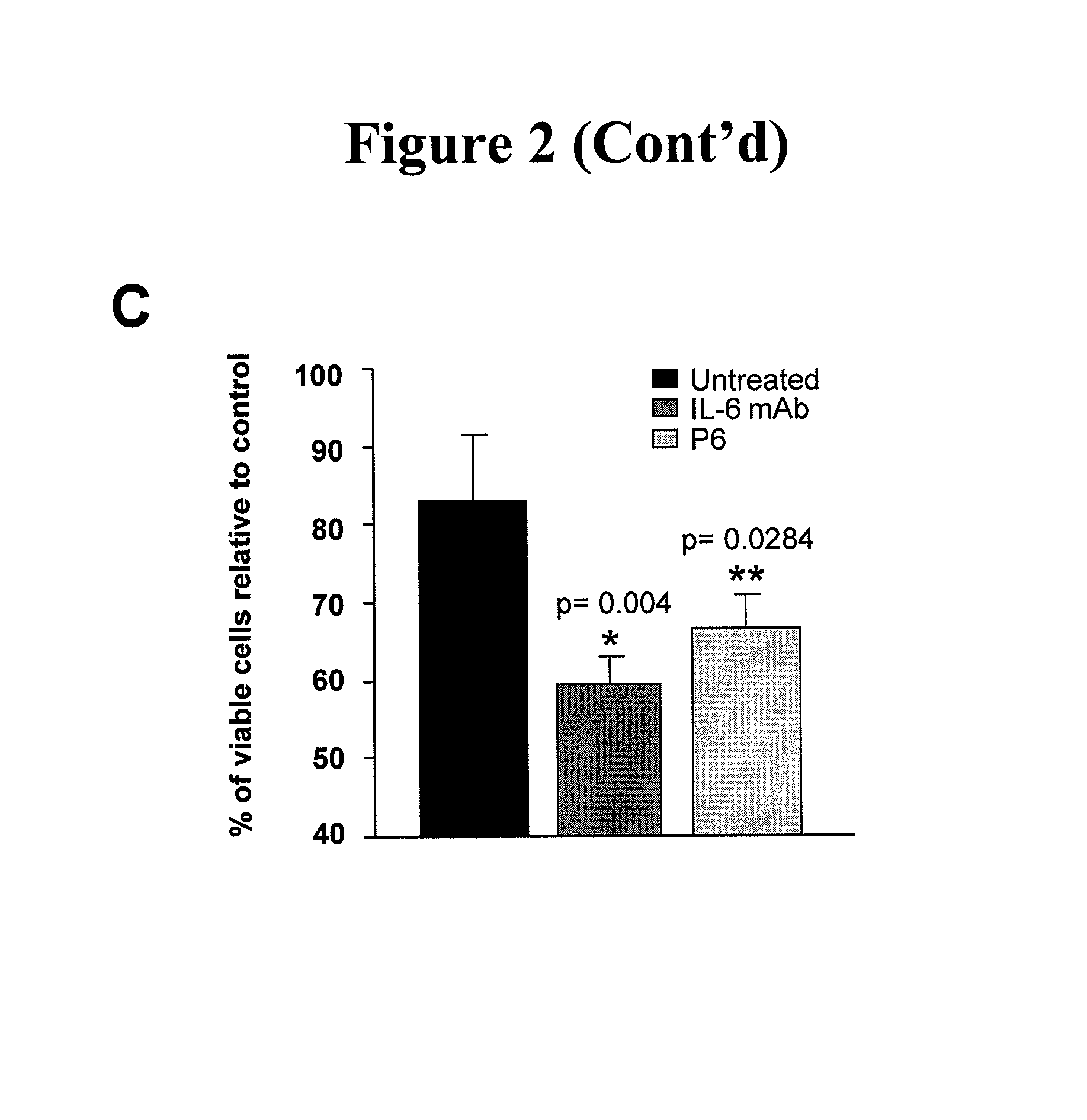Methods of assessing therapeutic benefits of patients having cancers resistant to epidermal growth factor receptor kinase inhibitors
a technology of therapeutic benefit, which is applied in the field of assessing the therapeutic benefit of patients with cancers resistant to epidermal growth factor receptor kinase inhibitors, can solve the problems of considerable heterogeneity in the response of nsclc patients to egfr inhibitor treatment, and achieve the effects of reducing tumor volume, enhancing apoptosis of egfr tyrosine kinase inhibitor resistan
- Summary
- Abstract
- Description
- Claims
- Application Information
AI Technical Summary
Benefits of technology
Problems solved by technology
Method used
Image
Examples
Embodiment Construction
[0020]Described herein is a method of treating a cancer in a subject, including administering to a subject in need of the treatment an effective amount of an EGFR inhibitor (e.g., an EGFR tyrosine kinase inhibitor) and an effective amount of an IL-6 inhibitor. In some embodiments, an effective amount(s) of the EGFR tyrosine inhibitor and / or the IL-6 inhibitor such that co-administration of the two inhibitors leads to an anti-cancer effect, including, but are not limited to, enhancement of cancer cell apoptosis, suppression of cancer growth, and regression of tumor volume. In one example, the amount of the IL-6 inhibitor is sufficient to increase sensitivity of EGFR tyrosine kinase inhibitor-resistant cancer cells to the EGFR tyrosine kinase inhibitor, and / or reduce resistance of the EGFR tyrosine kinase inhibitor—resistant cancer cells to the EGFR tyrosine kinase inhibitor.
[0021]A “subject”, as used herein, refers to a vertebrate mammal, including, but not limited to, human, mouse, ...
PUM
| Property | Measurement | Unit |
|---|---|---|
| concentrations | aaaaa | aaaaa |
| particle size | aaaaa | aaaaa |
| particle size | aaaaa | aaaaa |
Abstract
Description
Claims
Application Information
 Login to View More
Login to View More - R&D
- Intellectual Property
- Life Sciences
- Materials
- Tech Scout
- Unparalleled Data Quality
- Higher Quality Content
- 60% Fewer Hallucinations
Browse by: Latest US Patents, China's latest patents, Technical Efficacy Thesaurus, Application Domain, Technology Topic, Popular Technical Reports.
© 2025 PatSnap. All rights reserved.Legal|Privacy policy|Modern Slavery Act Transparency Statement|Sitemap|About US| Contact US: help@patsnap.com



